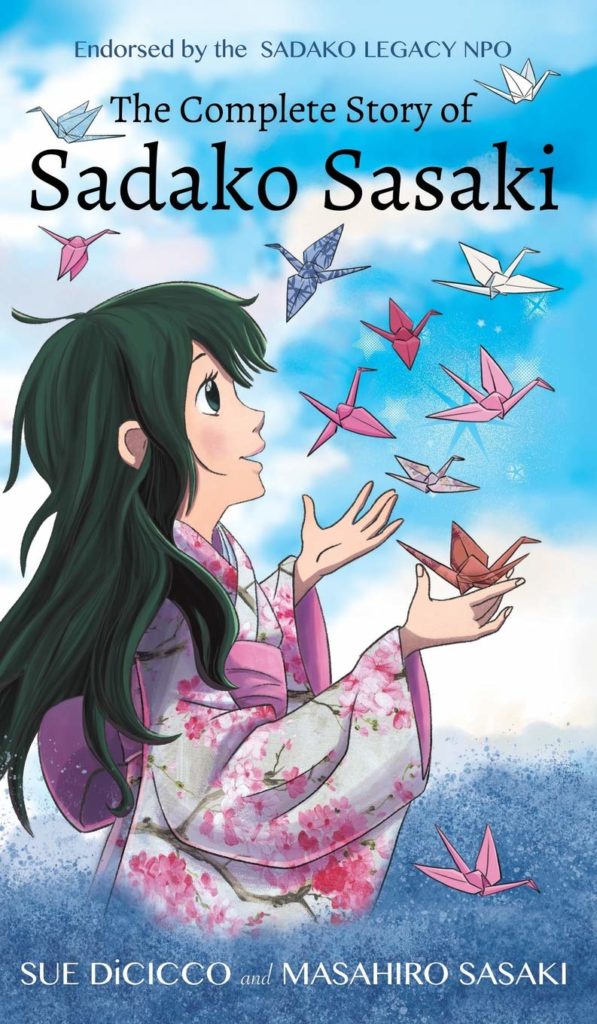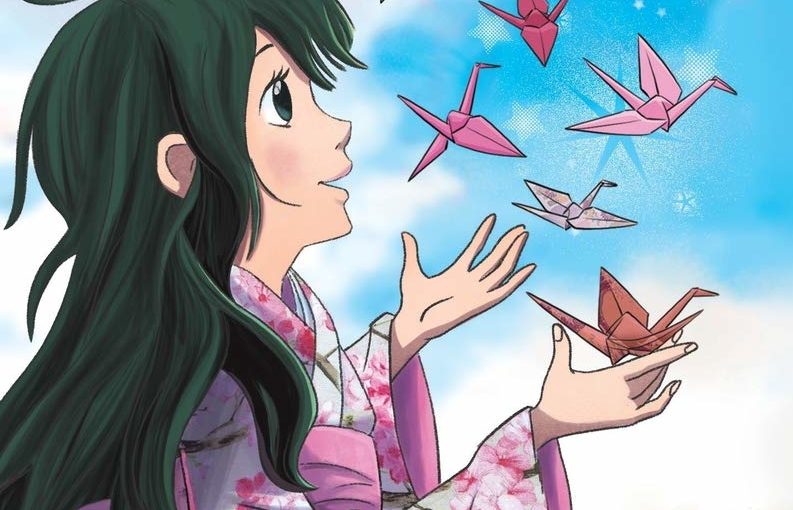The paper crane is ubiquitous with Hiroshima, Japan and the Atomic bomb. You don’t have to have visited Hiroshima to be aware of the relationship between the deceivingly complex origami crane, that location and its history. To some extent it’s as associated with the bomb as the dome shaped building that’s still in Hiroshima. However, the cranes have a story behind them and a teenage-girl who was the victim of the detonation. The Complete Story of Sadako Sasaki and the Thousand Paper Cranes is the soft-cover version of the book that tells her story.

The book combines soft, realistic anime-style art to a story that’s appropriate for middle school readers. The text accurately tells younger readers what happened, while shifting the focus of this particular story to Sadako and to an extent, her family. Her father was a barber with a nice shop that was constantly busy. In 1945 Sadako Sasaki was just two-years old. The people of Hiroshima were well versed in their bomb drills and what to do if they heard the sirens.
The bomb on August 7, 1945 was different and the people who weren’t in the area found the destruction difficult to fathom. How could a couple of planes do so much damage to one city in a short amount of time? The Black Rain, the radiation that followed and more were all things that impacted the population.
Sadako’s immediate family seemed to not have been affected. Granted their business suffered and they had to move, but they didn’t seem to have any of the effects that the bomb produced. That changed in the winter of 1955 when Sadako had what she thought was a small cold. In reality, it turned out to be Leukemia, which at that time was incurable and meant that she only had a couple of months to live.
While she was in the hospital she kept her spirits high. She was engaged with the doctors and always wanted to chat with them about things other than health issues. At the same time her family was dealing with loan sharks who were chasing a loan that her father had made for a friend, who then skipped town. Her family kept up appearances and always tried to make her feel special, even though she knew they were facing immense financial pressure at home.
While in the hospital, Sadako had a vision quest of sorts that if she made 1,000 paper cranes then she’d be able to grant one wish that would come true. Through the spring, summer and early fall of 1956 she continued to make them, in addition to sneaking looks at her blood count. The nurses weren’t aware that she knew just how dire her situation was, which makes her spirit all the more interminable.
When she died in October her classmates were looking for a way to honor her. Her principal picked up the cause and then it spread to other schools around Japan. In 1958 the statue of Sadako on top of The Children’s Peace Monument at Hiroshima’s Peace Park was unveiled.
The Complete Story of Sadoko Sasaki and the Thousand Paper Cranes is a powerful, yet approachable read. The illustrations make it such that those in middle school will be curious about it. The content and subject matter is also on par for those studying about World War II or Japan. If readers are familiar with the war then they’ll really enjoy reading about Japan in the early days of WW II. How they dealt with everyday life and towards the end of the war how they perceived it all is fascinating. It also does it from a factual point of view.
This is a great book that manages to take a sad story and situation, but discovers the optimism and hope behind one of the characters in that time period. Sadako’s brother, Masahiro writes a couple pages at the end of the book that present some great points that are more direct and less narrative. The book is written by Sue DiCicco and published on Tuttle Publishing.
There are affiliate links in this post.





 Facebook
Facebook Twitter
Twitter Flickr
Flickr GooglePlus
GooglePlus Youtube
Youtube